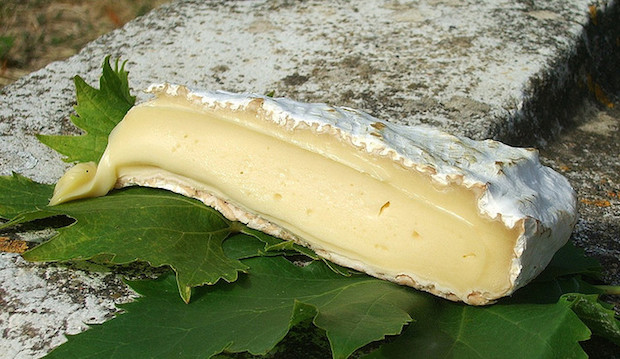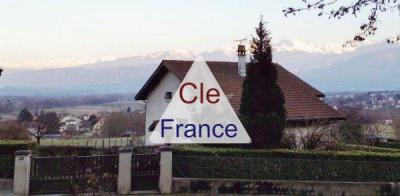More musing on the delights of French cheese!
Last week we learned about two of the most famous French cheeses: Camembert and Roquefort. Today, we will look at two more cheeses that have earned a following by cheese connoisseurs à travers le monde (around the world).
Image by Jennifer on Flickr
Brie :
Brie is perhaps le fromage Français le plus connu (the most well known French cheese) in the United States. Along with Camembert, Brie can be purchased in most supermarchés (supermarkets) around the country. Many people may confuse Brie with Camembert because it looks similar. However, both cheeses have distinct flavours that set them apart.
Like Roquefort, Brie has been around for centuries and even gained the approval of le Roi Charlemagne (King Charlemagne) in the late 8th century. And it was one of Louis XVI’s favourite cheeses, lending credence to its royal title “Le Roi des Fromages” (The King of Cheeses), a moniker later earned during un concours (a contest) put on by Charles Maurice de Talleyrand, le Premier Ministre de France au début du 19ème siècle (France’s Prime Minister at the beginning of the 19th century).
The most famous Brie comes from the town of Meaux in the Seine-et-Marne region near Paris. Like Camembert, Brie has a kind of yellowish colour, is very creamy and should be consumed with bread. It works wonderfully as a dessert cheese accompanied by fruit and paired with Champagne.
Chèvre :
Chèvre is another popular and widely consumed cheese. The word chèvre means goat in French and, as you might have already guessed, this cheese is made entirely of lait de chèvre (goat’s milk). Surprisingly the Pays de la Loire and Normandy as well as the more obvious Limousin are good regions for cheese is made entirely of lait de chèvre.
Goat cheese is characterised by its stark white appearance that turns jaune (yellow) as it ages. If you wait too long, it begins to take on a flavour similar to savon (soap) along with une odeur puante (a smelly odour) that can be rather unpleasant. Chèvre is an acquired taste and it can be a little fort (strong) when you first try it, but give it a little time and you’ll begin to appreciate its more pungent flavour and aroma.
Unlike Brie, Camembert or even Roquefort, Chèvre comes in different formes (shapes) that you might not expect. Pyramids, cylinders and little even little cubes will make you double-check the label to make sure you’re buying chèvre. Chèvre is one of the few cheeses equally at home on your salad, your pizza or in your omelette. Un verre de vin rouge ou blanc avec un morceau de pain et un peu de Chèvre, et peut-etre quelques olives (a glass of red or white wine with a piece of bread and a little Chèvre, and maybe a few olives) makes for an excellent little repas (meal).
Blog submitted by: Alex at The French Property Network - Cle France.











